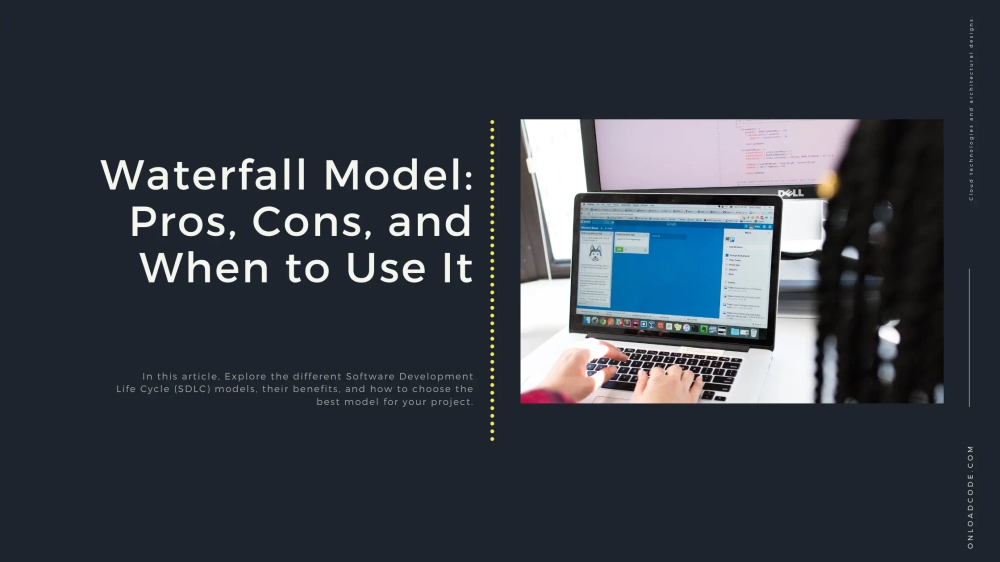Published
- 2 min read
Waterfall Model: Pros, Cons, and When to Use It

Waterfall Model: Pros, Cons, and When to Use It
The Waterfall Model is one of the oldest and most widely used Software Development Life Cycle (SDLC) models. It follows a linear and sequential approach, where each phase must be completed before moving to the next. This model is best suited for projects with well-defined requirements and minimal expected changes.
Understanding the Waterfall Model
The Waterfall Model is divided into distinct phases:
-
Requirement Analysis
- Gather and document all requirements.
- No modifications are made after finalization.
-
System Design
- Define the system architecture.
- Create technical specifications.
-
Implementation (Coding)
- Developers write the actual code based on the design.
-
Testing
- Identify and fix defects.
- Conduct various testing methods such as unit, integration, and system testing.
-
Deployment
- Release the software for end-users.
- Deploy the product as a full system.
-
Maintenance
- Handle software updates and bug fixes.
- Provide ongoing support.
Pros and Cons of the Waterfall Model
✅ Advantages
- Structured and Simple: Clear phase-by-phase approach makes it easy to manage.
- Well-Documented: Each stage is well-documented, reducing ambiguity.
- Predictable Costs & Timelines: Budget and time estimates are clear from the beginning.
- Easier to Manage: Since phases don’t overlap, project tracking is straightforward.
❌ Disadvantages
- Inflexibility: Difficult to make changes once a phase is completed.
- Late Testing Phase: Bugs and issues are discovered late in the cycle.
- Customer Feedback Delays: End-users interact with the software only after full deployment.
- High Risk: If initial requirements are incorrect, costly fixes are needed later.
When to Use the Waterfall Model
The Waterfall Model is best suited for:
✅ Projects with Clear Requirements – When client specifications are fully defined upfront.
✅ Short-Term, Low-Complexity Projects – Best for simple applications with limited features.
✅ Regulated Industries – Sectors like healthcare and aerospace that require strict documentation and compliance.
✅ Projects with Stable Technology – If the technology stack is well-established and unlikely to change.
Waterfall vs. Other SDLC Models
| Feature | Waterfall Model | Agile Model | Spiral Model | DevOps Model |
|---|---|---|---|---|
| Flexibility | Low | High | High | Very High |
| Risk Handling | Low | Medium | High | Medium |
| Customer Feedback | Late | Continuous | Moderate | Continuous |
| Best For | Well-defined projects | Evolving projects | High-risk projects | Rapid development |
Conclusion
The Waterfall Model remains a reliable choice for projects with clear objectives, minimal changes, and strict regulatory requirements. However, for modern, fast-changing projects requiring frequent iterations, Agile or DevOps models may be more suitable.
Quiz Questions
- What are the key phases of the Waterfall Model?
- Why is the Waterfall Model not suitable for dynamic projects?
- What is one major disadvantage of the Waterfall Model?
- When should you consider using the Waterfall Model?
- How does the Waterfall Model compare to Agile in terms of customer feedback?
Let me know if you need any refinements! 🚀
